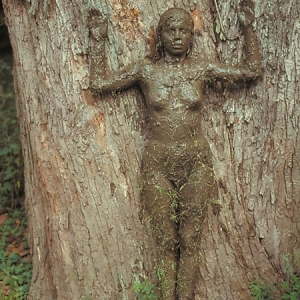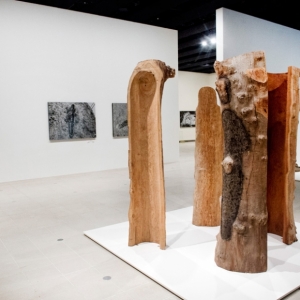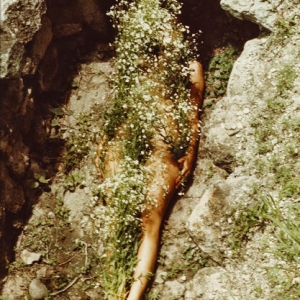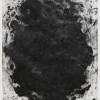Born in Cuba in 1948, Ana Mendieta showed a fascination with the culture of her ancestors from an early age, an obsession that transpires throughout her thought-provoking retrospective at London’s Hayward gallery this month.
It is safe to say the exhibition has one clear theme, the muse of artists throughout history; the female body. Yet, despite several of the pieces having ‘Venus’ in the title, this is by no means a celebration of female sensuality; rather the body and nature are suffocatingly intertwined.
Mendieta’s artistic production seems to fall into two categories. The first half can perhaps be deemed more performative – the artist’s wild and wonderful escapades captured within modest five-minute clips. ‘Chicken Movie’ for instance, where the artist stands nude and still for the duration of the video, holding a large dead bird that covers her most intimate parts. Or ‘Ocean Bird Wash Up’, where her painstaking placement of individual bird feathers is shown tousled by waves of a tempestuous sea. The neighbouring video too demonstrates this obsession, not only with being at one with nature, but being inseparable from nature. She camouflages herself amongst a heap of rocks and convulses, causing the “earth itself to appear to breathe”.
Inflicting her own body upon nature continues as a prominent theme. The exhibition’s most impressive room is filled with a collection of hollowed-out trees and haphazardly carved rocks that assume the familiar female form. The trees play host to two protruding knots of breasts, with a gaping hole below, that Mendieta uses to represent the source of all life. Using these as shapes (each ‘woman’ gets a head), she tags her own body onto natural forms, rather as a graffiti artist might inscribe their name around a city, or an animal mark its territory.
Perhaps this exhibition seeks to question the very notion of woman, or at least her representation in artworks. “Black Venus” is far-removed from the Renaissance ideals set down by Titian or Botticelli, or even early feminist representation with the same title by Suzanne Valadon. Mendieta’s Venus takes the form of a gunpowder silhouette in the earth, its only resemblance the voluptuous curves of the shapes and its supine position. The main rooms continue in much the same way, the artist’s intentions somewhat obstructed by the very repetition of this forceful placing of the body within natural forms.
Anomalous to this theme is the very prominent ‘rape’ series, and Mendieta’s early concern with human blood that dominates Room Two. Blood-drenched handprints disrupt the white walls, and the process of creation, as the artist bends down provocatively to smear the canvas with blood, demonstrating the paradox of what is both sexually inviting and grotesque. A cinema room shows a lactating breast, repeatedly squeezed on a loop for the non-squeamish viewer. Admittedly, however, the controversial nature of the latter gives the exhibition its fervor, without which the vagina/breast adorned leaves, against the galleries white walls with no real affinity to nature, become somewhat tiresome.











